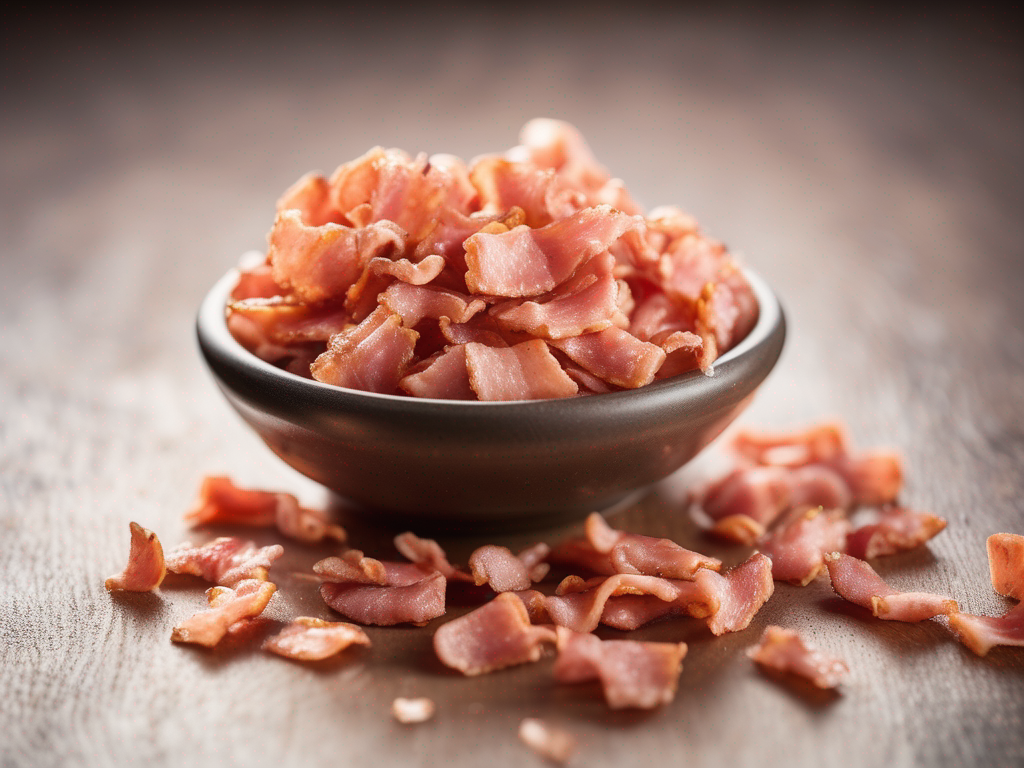
How to Store Opened Imitation Bacon Bits for Maximum Freshness
Get Your Free Food Safety Cheat Sheet
30 most common foods with instant answers. Print it and stick it on your fridge—completely free!
How to Store Opened Imitation Bacon Bits for Maximum Freshness
When it comes to storing opened imitation bacon bits, proper storage is key to maintaining their freshness and flavor. Whether you use imitation bacon bits in salads, soups, or as a topping for baked potatoes, ensuring that they are stored correctly can help prolong their shelf life and prevent them from spoiling prematurely. In this guide, we will explore the best practices for storing opened imitation bacon bits to maximize their freshness. (Imitation bacon bits)
Understanding Imitation Bacon Bits
Imitation bacon bits are a popular pantry staple for adding a smoky, bacon-like flavor to various dishes. Made from soy flour, vegetable oil, and seasonings, these crunchy toppings are a convenient alternative to traditional bacon bits. While they may not contain actual bacon, imitation bacon bits can still add a savory touch to your favorite recipes.
Key Points About Imitation Bacon Bits:
- Texture: Crunchy and crumbly
- Flavor: Smoky and savory
- Ingredients: Typically soy flour, vegetable oil, salt, and seasonings
- Usage: Sprinkle on salads, soups, baked potatoes, and more
Now that we have a better understanding of imitation bacon bits, let's delve into the best practices for storing them to ensure they remain fresh and flavorful.
Best Practices for Storing Opened Imitation Bacon Bits
Proper storage of opened imitation bacon bits is essential to prevent them from becoming stale or rancid. Follow these tips to maintain the quality of your imitation bacon bits for an extended period:
1. Seal in an Airtight Container
- Transfer the opened package of imitation bacon bits to an airtight container to protect them from moisture and air exposure.
- Ensure the container has a tight-fitting lid to create a barrier against external elements that could compromise the freshness of the bacon bits.
2. Store in a Cool, Dark Place
- Keep the airtight container of imitation bacon bits in a cool, dark pantry or cupboard away from direct sunlight.
- Exposure to heat and light can accelerate the degradation of the ingredients in the bacon bits, leading to a loss of flavor and texture.
3. Avoid Refrigeration
- Imitation bacon bits do not require refrigeration after opening, as they have a long shelf life at room temperature.
- Refrigeration can introduce moisture to the bacon bits, causing them to become soggy and lose their crunchiness.
4. Check for Signs of Spoilage
- Periodically inspect the imitation bacon bits for any signs of spoilage, such as changes in color, texture, or odor.
- Discard the bacon bits if they appear discolored, have an off smell, or exhibit signs of mold growth.
5. Use Within a Reasonable Timeframe
- While imitation bacon bits have a long shelf life, it's best to use them within a reasonable timeframe to enjoy optimal freshness.
- Check the expiration date on the original packaging as a guideline for the recommended usage period.
By following these storage tips, you can prolong the shelf life of opened imitation bacon bits and ensure they retain their quality until you're ready to use them in your favorite dishes.
Conclusion
Proper storage of opened imitation bacon bits is essential for maintaining their freshness and flavor. By sealing them in an airtight container, storing them in a cool, dark place, and avoiding refrigeration, you can extend the shelf life of your bacon bits and enjoy them in various recipes. Remember to check for signs of spoilage and use the bacon bits within a reasonable timeframe to maximize their quality. With these simple storage tips, you can continue to add a delicious smoky flavor to your meals with confidence.
For more information on imitation bacon bits and other food storage tips, visit this link. (Imitation bacon bits)
Authoritative Food Safety References
These agencies and university labs inform every tip and health precaution we publish.
USDA FoodKeeper – Cold Storage Guidelines
Official refrigerator, freezer, and pantry timelines maintained by the U.S. Department of Agriculture.
Visit USDA FoodKeeperFDA Produce Safety Rule & Grower Guidance
Field-to-fridge handling practices that prevent contamination of fruits, vegetables, and leafy greens.
Visit FDA Produce SafetyCDC Foodborne Illness Prevention Hub
Surveillance-backed guidance on pathogens, symptoms, and steps to reduce foodborne illness risk.
Visit CDC Food SafetyUC Davis Postharvest Technology Center
University research detailing optimal storage atmospheres for produce after harvest.
Visit UC Davis PostharvestPenn State Extension – Home Food Preservation & Safety
Peer-reviewed extension bulletins on safe canning, chilling, and reheating practices.
Visit Penn State ExtensionGet Your Free Food Safety Cheat Sheet
30 most common foods with instant answers. Print it and stick it on your fridge—completely free! Want more? Upgrade to the complete guide with 70+ foods.
Scan your food directly and get instant safety info using our AI-powered camera feature.